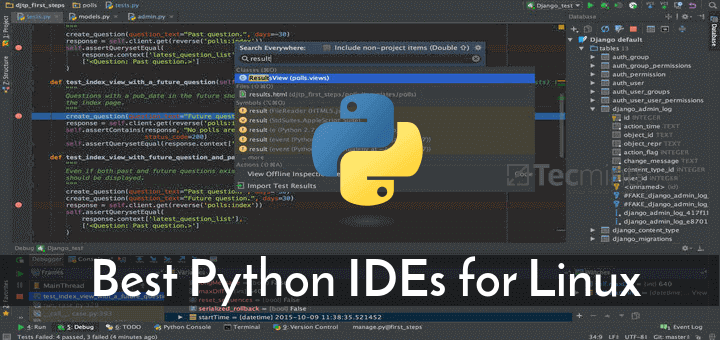

While its small stature remained the same, the Raspberry Pi 4 brought a major overhaul. Learn why you should consider the Raspberry Pi as a programming machine, and check out the best Raspberry Pi integrated development environments (IDEs) for all languages! Why the Raspberry Pi Is Great as a Programming DesktopĪn unassuming credit-card-sized development board, the Raspberry Pi packs way more processing power than its tiny footprint lets on. With its shocking processing power, the Pi works extremely well as a desktop computer, and accordingly for programming and development. The Raspberry Pi Foundation debuts new models and variants regularly.
#Best python ide for gui plus
Boasting a massive user base plus a plethora of first- and third-party resources ranging from books and accessories to forums and courses, it's a well-documented maker board that benefits from regular updates. WingIDE is also good, but lacks support for Projects, sophisticated debug configurations, etc.The Raspberry Pi may not be the only single-board computer (SBC) on the market, but it's certainly the most popular. If you must use something else, I recommend Geany. Unfortunately, I haven't found any IDE that is as mature and complete. Be sure you set your PYTHONPATH properly in your debug configuration, turn on line numbering and display of whitespace characters.

I have adopted the habit of taking regular tarball backups of the workspace directory (and files I'm editing). I've found that its best to NOT let Eclipse copy files to its "workspace" directory - force it to use the existing files. * Virtual Word Wrap (it should be built in, but is not). * GET Pydev Extensions - it's well worth the $42 (gives you an interactive debug shell and PyLint integration) * Use Eclipse 3.3.2 (instead of 3.4.x - I found 3.4 to be VERY unstable with PyDEV - and the debug shell doesn't work)

Here's what I have discovered through blood, sweat, and tears: So, okay, does anyone have any other ideas?" Unforutnately, unlike Eclipse or Emacs, there's no ability to do step/trace style debugging.
#Best python ide for gui code
SCiTE loads fast, does nice Python highlighting, and has the ability to run code right from the browser. Which is nice, but, the code browsing doesn't seem to be able do autocomplete with PyGTK (to be fair, Eclipse's didn't work so well, either in that regard, at least not on the default Ubuntu install) Unfortunately, there are no GUI WordStar-style editors and none of them are cross-platform with Windows. I also seem to prefer either vi/Vim style editors, CUA-style editors, or WordStar-style editors. So then I installed the Emacs Code Browser, Semantic and associated elisp code and found that it didn't work right half the time. Emacs is cool, but I found that I missed code browsing. (Read more below.) Morgan Greywolf continues: "I've also done the Emacs thing. I spent so much time re-creating Eclipse's workspace that I found any productivity gains were lost due to Eclipse's brokenness. It got so bad at one point that every week or so I was tearing it down and recreating it. Eclipse is cool, but it's huge, and I've had multiple problems with corruption of the workspace.
#Best python ide for gui software
What do you find is the best text editor for Python software development? I've tried several, and I'm always frustrated by the limitations of each.


 0 kommentar(er)
0 kommentar(er)
